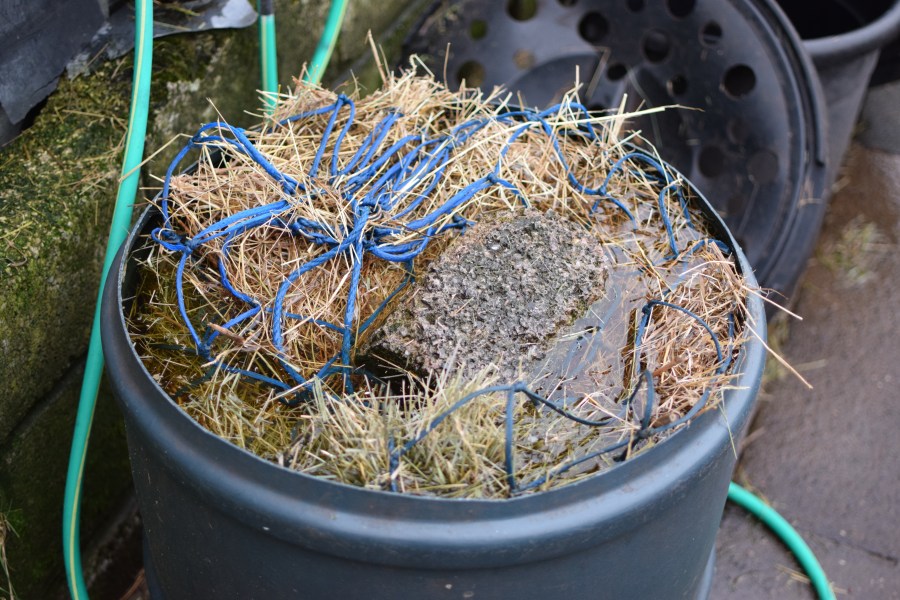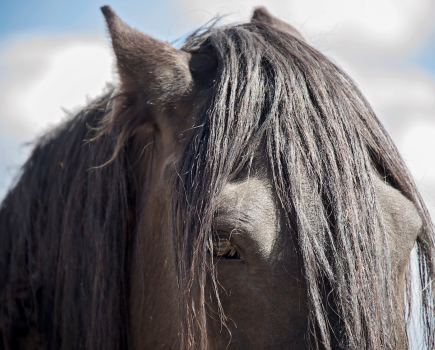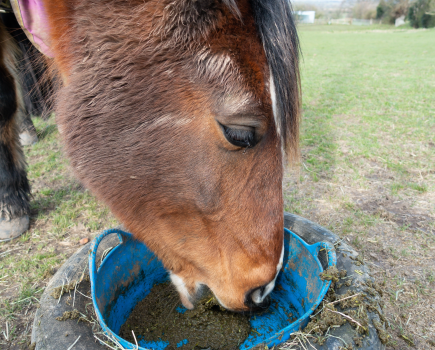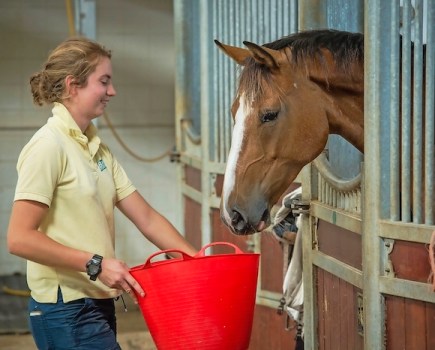In partnership with SPILLERS™
Soaking hay helps to reduce its water-soluble carbohydrate (WSC) or ‘sugar’ content. Of course less sugar means fewer calories, which is why including soaked hay in their diet can be a useful tactic for horses or ponies that need to lose weight. However, WSC losses are highly variable, which means soaking can’t guarantee suitability for laminitics.
Tips for soaking hay
- Always use fresh water.
- As a guide, soak for 1-3 hours in warm weather and 6-12 hours in cold weather.
- Increase the amount of hay you soak by approximately 20% to compensate for the loss of dry matter.
- Make sure your haynet is fully submerged in the water.
- In hot weather, ideally soak your hay out of direct sunlight.
Dry matter losses explained
All forage contains some water (which doesn’t count towards the horse’s forage intake). The portion that’s left when you remove this water is described as the ‘dry matter’.
Due to the loss of nutrients (and therefore dry matter) into the water, each section of hay will contain more water and less ‘hay’ post soaking.
For example, a net of hay weighing 7.5kg may contain around 6.5kg of dry matter or ‘actual hay’ before you soak it, and only 5kg after soaking. As a practical guide, increase the amount of hay you soak by 20% to compensate. This will help to ensure that you don’t restrict your horse’s forage intake too severely.
Soaking vs steaming
Controlling weight gain and aiding weight loss isn’t the owning reason for soaking hay. It is also a useful method for horses with respiratory issues. In this situation, steaming hay is by far the superior option, because steaming has little effect on WSC levels.
Although steaming is not a practical solution for many owners, soaking followed by steaming (in a commercial steamer) helps to achieve the best of both worlds if you are trying to reduce the level of ‘sugar’ in your hay and improve its hygienic quality. You can also steam straw before feeding it to improve its hygienic quality.
Soaking hay for laminitics
If your horse is prone to laminitis, ideally have your forage analysed (by the wet chemistry method) and soak hay as a back up.
Forage for laminitics should contain less than 10-12% non-structural carbohydrate (NSC = WSC + starch) on a dry matter basis. However, as UK forage consistently contains very little starch (around 2% or less), testing for WSC rather than NSC is often sufficient.
Important role
Overall, soaked hay plays an important role in managing a horse’s weight. It is quick and easy to do, without any specialist equipment required, and an affordable option for most horse owners.
For more specific advice, you can contact the SPILLERS™ Care-line on 01908 226626 or visit www.spillers-feeds.com
![]() Have you heard about Your Horse’s #FitNotFat campaign? Equine obesity is an enormous welfare problem and we’re on a mission to provide owners and riders with the knowledge, skills and information you need to keep your horse in tip-top health. It could be life saving! Find out more
Have you heard about Your Horse’s #FitNotFat campaign? Equine obesity is an enormous welfare problem and we’re on a mission to provide owners and riders with the knowledge, skills and information you need to keep your horse in tip-top health. It could be life saving! Find out more








